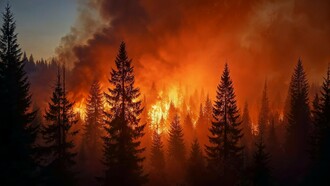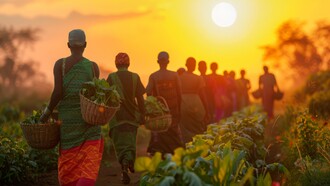It is believed that the Saami people arrived from the Ural Mountains to the Fenno-Scandinavian peninsula over 10,000 years before present (Burmeister Hicks, 2000). Since their relocation to the fjords, seas, fields, and landscapes of Scandinavia, they utilised nature’s resources for centuries to cover their needs, always with deep respect towards her. Reindeer herding, along with pastoralism, was the most sustainable traditional livelihood within the Saami socioeconomic system, deeply interconnected with nature and land (Markkula, 2019).
However, as troubles arose in southern Europe, the North Germanic peoples invaded the Saami's homeland and interrupted their peaceful way of living. Then, they imposed taxes on them in order to exploit the abundant resources of their land. Additionally, Norway’s and Sweden’s governments treated the Saami as a lower social class of people, who had to be civilised via education and state policies. The assimilation policies continued until the middle of the twentieth century. One of those policies was the prohibition of speaking the Saami languages in public. Today, the Saami people are recognised as indigenous ethnic minorities in Sweden, Norway, and Finland, where they have their own parliaments, and they can freely speak their native languages, in contrast to the distant past.
Speaking about the Saami languages, it needs to be clear that the Saami are not a homogenous group of people. Instead, there are specific Saami subgroups, and each one of them has its own language (Kelman, 2019). Over the centuries, the Saami were deeply and respectfully connected with the environment because of their nomadic way of living and the fact that nature provided them with everything needed (Markkula, 2019). Especially, the Saami culture was in harmony with nature as one inseparable identity, causing no harm to it, since they believe that nature is more significant than financial incomes.
Although the traditional ways of the Saami’s life fundamentally changed in the last decades (Kelman, 2019). In detail, the climate in northern regions, such as the Saami region in Finland, is warming at a faster rate than it does in the southern areas. Consequently, the Saami people will be among the first to experience the consequences of climate change. Climate change is causing warmer temperatures, melting ice, rising sea levels, and changes in the availability of food for reindeer too. Survey results confirm that climate change is a reality and that reindeer herding in Finland is being negatively affected by these environmental shifts. Particularly, previous studies have shown that for those who rely on the land for their livelihood, ecological changes, such as shifts in species composition, biodiversity, or landscape structure, can weaken their cultural and social connection to their land, leading to an identity crisis. That would be a challenging situation to confront, especially given the assimilation policies the Saami people endured.
The global spread of technological advancements has brought about profound changes in human life (Burmeister Hicks, 2000). This shift led to urbanisation and the rise of capitalism, resulting in deforestation, mining exploitation, and the commodification of resources such as water and land to meet the growing demands of cities. These changes have placed pressure on natural resources, leading to the forced displacement of the Saami people in Norway and Finland due to energy exploitation projects. This was further compounded by housing programs implemented in Norway in 1958 and 1969.
However, as the Scandinavian governments own the land and set the laws, policies often prioritise economic gain over the preservation of Saami culture and heritage, and Saami people do not have the legal right to primarily act. The rights of indigenous people to their land must be respected and protected. Saami must be actively involved in decision-making processes to prevent the erosion of their cultural ties, which are deeply rooted in their natural environment (Burmeister Hicks, 2000). In conclusion, traditional knowledge about nature, as an integral part of Saami identity, should be safeguarded and promoted not only nationally but also globally through international organisations, supporting today's countries' efforts toward a more sustainable future.
References
Burmeister Hicks, Christian Jakob, Historical Synopsis of the Sami/United Nations Relationship, (2000), The Arctic Is.
Kelman, Ilan, Climate Change and Migration for Scandinavian Saami: A Review of Possible Impacts, (2019), MDPI.
Markkula, Inkeri, A review of climate change impacts on the ecosystem services in the Saami Homeland in Finland, (2019), Elsevier.















